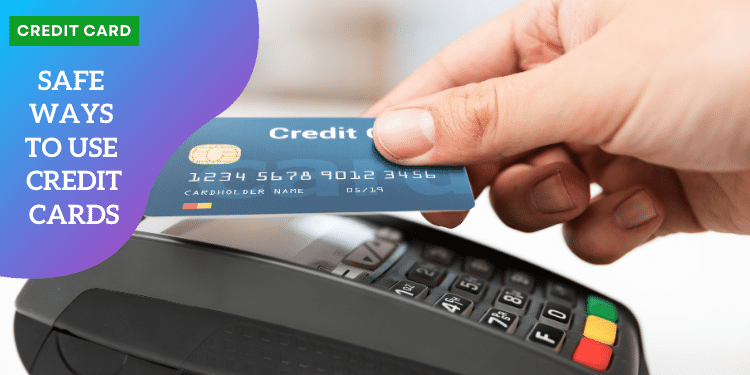Safe Ways to Use Credit Cards

Using a credit card safely is essential to protect your personal finances and avoid possible problems, such as fraud or excessive debt. Here are some safe ways to use a credit card:
1. Keep Your Information Confidential:
Do not share your credit card details such as number, expiry date and security code (CVV) with anyone unless it is a legitimate and trustworthy transaction. Avoid sending this information via email or insecure text messages.
two. Protect your Physical Card:
Keep your physical credit card in a safe place and avoid leaving it in sight or within reach of other people. If you lose your card or suspect it has been stolen, contact the issuing institution immediately to block it.
3. Use Strong Passwords and PINs:
Choose strong passwords and PINs to access your online account and authorize transactions. Avoid obvious or easily guessable passwords, such as dates of birth or simple sequences of numbers.
4. Regularly Monitor Your Invoice:
Review your monthly credit card statements carefully to identify any suspicious or unauthorized transactions. If you find something wrong, contact the issuing institution immediately.
5. Configure Transaction Alerts:
Many banks allow you to set up transaction alerts via email, text message, or mobile notifications. These alerts can inform you whenever a transaction occurs with your card, helping you quickly identify unauthorized activity.
6. Avoid Unsecure Sites and Applications:
When shopping online, make sure the website or app is safe and trustworthy. Look for a padlock icon in the address bar, which indicates that the connection is secure. Avoid entering credit card information on questionable or unencrypted websites.
7. Use Virtual Cards:
Consider using virtual credit cards for online purchases. They are temporary card numbers, not linked to your physical card, providing an additional layer of security.
8. Be Careful with Suspicious Emails and Calls:
Be wary of emails or phone calls asking for personal financial information, even if they appear to be from legitimate sources. Scammers often impersonate banks or financial institutions.
9. Use Two-Factor Authentication (2FA):
When available, enable two-factor authentication on your financial accounts. This requires an additional code or biometric authentication in addition to the password to access your account.
10. Keep your Device Safe:
Protect your computer and mobile devices with up-to-date antivirus and security software. Use secure passwords to unlock your devices.
Following these security practices when using a credit card helps protect your finances and personal information. Remember that constant vigilance and financial education are essential to maintaining a safe environment when dealing with financial transactions. If you suspect any suspicious activity, do not hesitate to contact your bank or card issuing institution.






